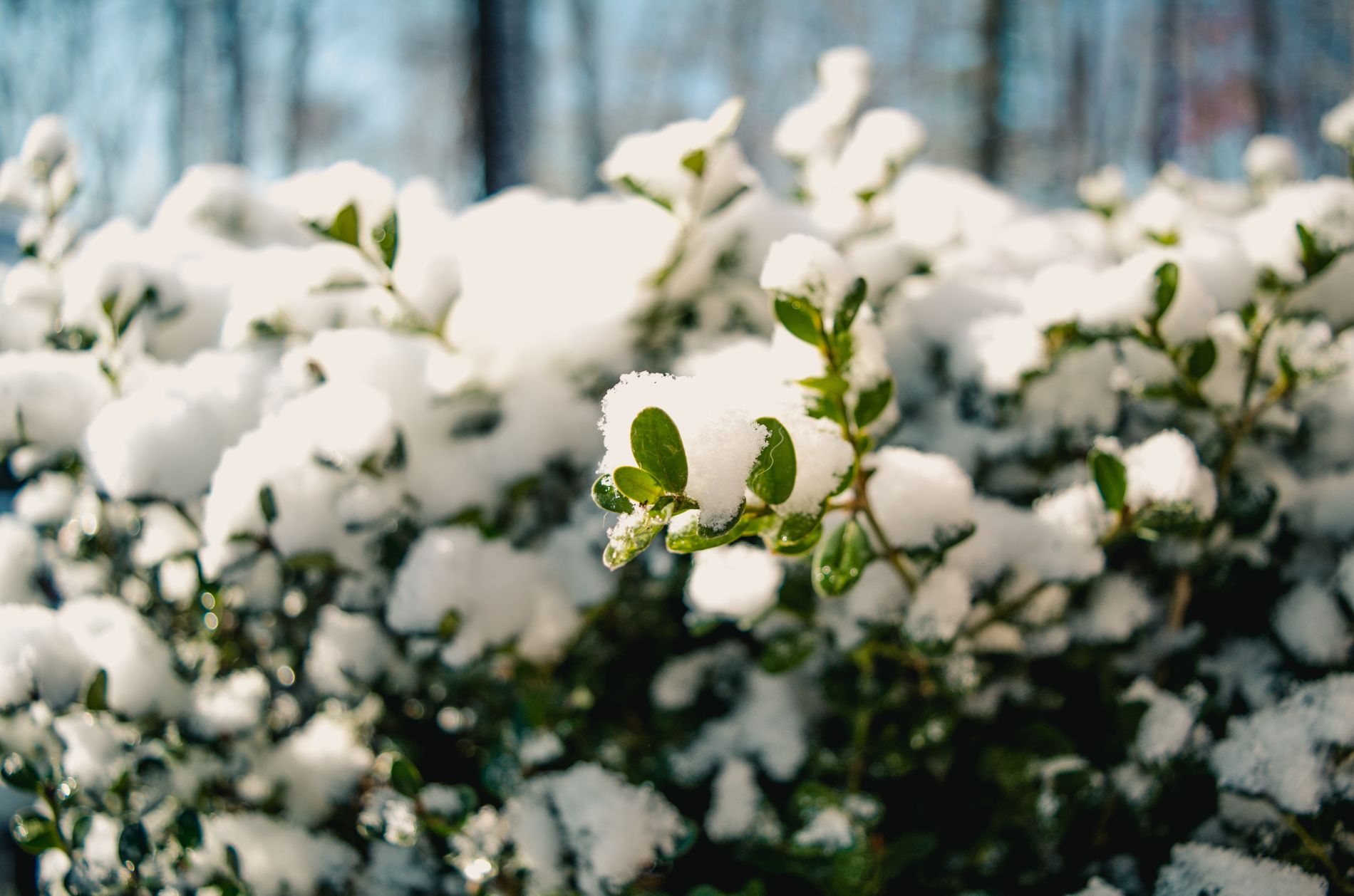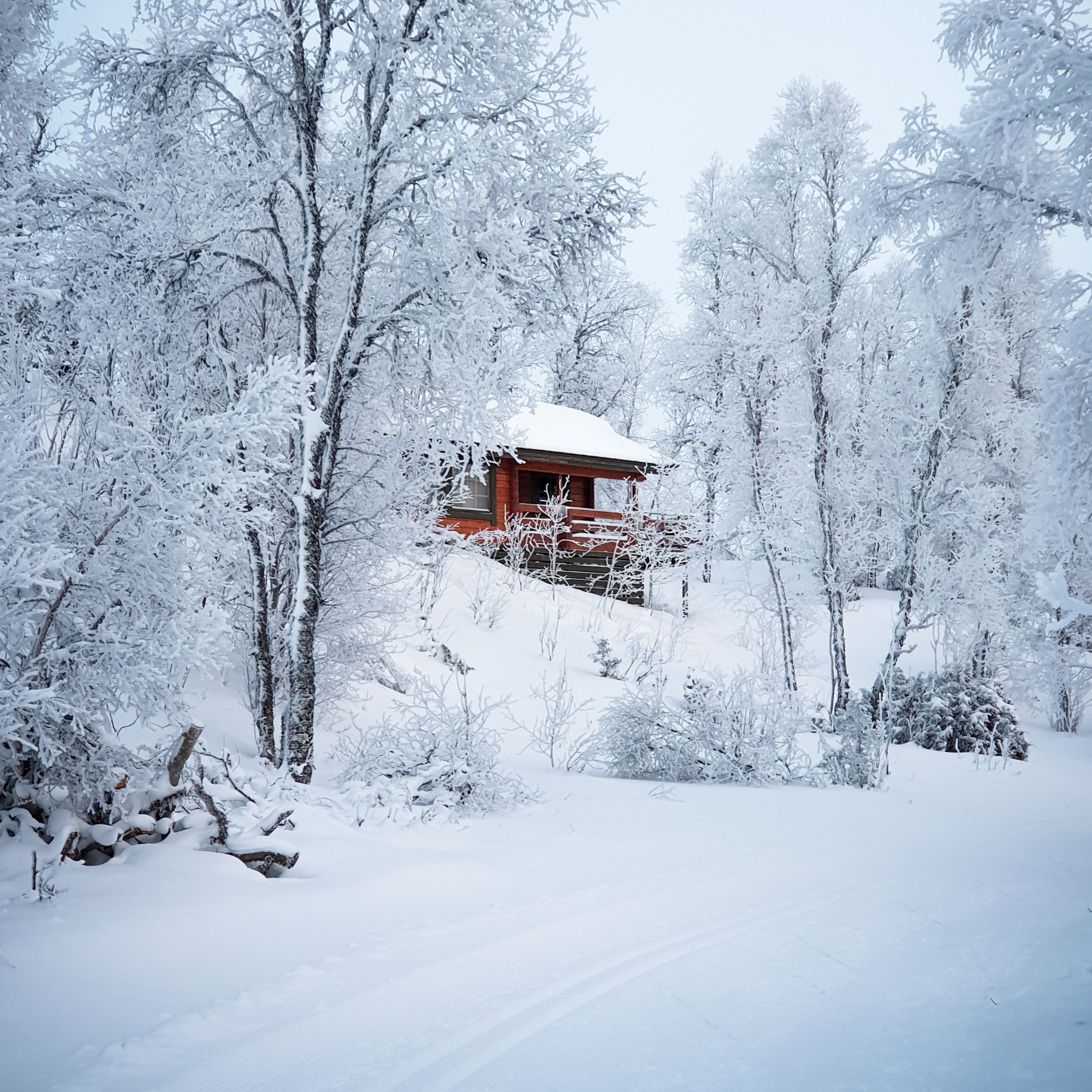Each year, the arrival of fall in the northeastern United States signals the obvious- winter (and harsher weather) is on the way. So, if you haven’t already- it’s time to prep your landscape and gardens so they’re ready to handle the impending cold, snow and ice.
Taking action before harsh weather will help protect your landscape design investment– ensuring your outdoor space emerges ready for spring and enjoys a hearty rebirth.
Here’s a helpful guide that covers some of the key areas to address so that your property is ready for the upcoming winter conditions.
Landscape & Garden Winterization
- Use 1-3” mulch & leaves to protect plant roots
- Cut Back Perennials
- Cut back ornamental grasses
- Remove all weeds
- Remove all annual flowers, veggie plants
- Water plants thoroughly before deep frost
- Turn water system off and drain pipes
- Top off bird feeders
- Clean and neatly store garden tools
- Assess dead/dangerous tree limbs
- Apply Wilt Pruf® to sensitive evergreen foliage such as Cherry Laurels
Protect Plant Roots With Mulch & Leaves
To keep plants safe in cold temperatures, use a 1-3” layer of mulch or leaves as a way to prevent frostbite on plant’s roots, providing root protection over winter months- decreasing the chance of damage or loss. It’s also eco-friendly to re-purpose the unwanted leaves on your property in this way- preventing them from entering municipal waste systems. Mulching also replenishes the organic matter in your garden soil, allowing nutrients to incorporate into it- reducing and even eliminating dependency on chemical fertilizers.
Cut Back Perennials
Cutting back perennials at the end of fall will keep your garden looking tidy over the winter and ensure an uninhibited start when the weather improves. Getting rid of spent blooms and foliage allows plants to use energy more efficiently and also helps them to avoid collecting or propagating diseases on their spent stems.
Ornamental Grasses – Cut ‘Em Back
Cutting back ornamental grasses before winter keeps things neat over cold months and helps new shoots get immediate access to sunlight when spring arrives. You also won’t have to deal with pieces of ornamental grass blowing around your lawn all winter.
Remove Weeds
Removing the weeds from your garden will not only give you a fresh, neat start come spring- but will also prevent weeds from self-propagating or spreading their seeds (via tilling and wind) once warmer weather returns.
Remove Annual Flowers & Veggie Plants
Annual flowers and seasonal veggies won’t return in the spring- so remove them (get the roots!) before winter so your garden space is ready for spring planting. You’ll want to rotate your plantings for the following year to avoid disease and soil nutrient depletion. So make sure to gather up any spent fruit or seed stems!
Water Plants Before Deep Frost
For the plants that will stay in the garden over the winter, make sure to water them before the first frost. They’ll appreciate it. Moist ground actually stays warmer than dry ground does. So, watering before the first deep freeze actually insulates plant roots and decreases the chance of injury over winter months.
Turn Off Water System, Drain Pipes
Having a water pipe burst, especially during a winter storm, is a nightmare. Don’t let this happen to you. First, turn off the outdoor water supply (usually in your basement) and remove any hoses from faucets and store them neatly. Then turn each faucet on full blast until all of the water has come out. Close the faucets tightly. You can also cover faucets themselves, if desired, for an extra layer of protection.
Top Off Bird Feeders
As the weather changes and snow falls, our winged friends will appreciate an easier way to get a meal! Topping off your bird feeders will help keep these critters thriving in the harshness of winter. And, as a bonus, they’ll sing their thanks!
Clean & Store Garden Tools For Next Season
Having everything you need ready to go for next season is a must for any well-functioning garden. Clean shovels and other tools and store them neatly in a good spot on your property. For tools involved in heirloom vegetable production, we use hydrogen peroxide to make sure disease or fungus spores (that might have bloomed late in the season) aren’t inadvertently introduced into next year’s crop through contaminated tomato cages, pruners or gloves.
Look For Dead & Dangerous Tree Limbs
Under the weight of ice and snow, tree limbs can break and cause damage to your home, exterior structures and even pose a hazard to the people and pets on your property. Make a point to take visual stock of your trees, noting those limbs that appear suspect. Have them evaluated/removed by someone that’s qualified (preferably, a skilled arborist) and you’ll lessen the risk of injury or property damage.
Apply Wilt Pruf® To Evergreen Foliage
Ever notice some evergreens get brown and dead foliage throughout the winter? Wilt Pruf is what we recommend to keep sensitive evergreens (such as Cherry Laurels) healthy during the harsh winter months. This spray-on solution creates a barrier on tree foliage to help it retain moisture. Winter winds strip foliage of water and replacing H2O through frozen root systems is harder during cold and freezing temps.
How To Get It All Done?
With cars, for example, there are those that perform their own maintenance and others that choose to take their vehicles to a mechanic. The same is true for maintaining your landscape.
If your landscape needs care that you don’t have the time to provide- don’t let it go. Contact a trusted, local landscape designer and ask about landscape maintenance. Although these services come at a cost, you’ll have peace of mind that your property will be set up for a healthy spring start and the investment you made will improve instead of diminish!
As well, you’ll have a trusted partner that will know your property that you can turn to for new landscape design projects, upgrades and other property enhancements.





